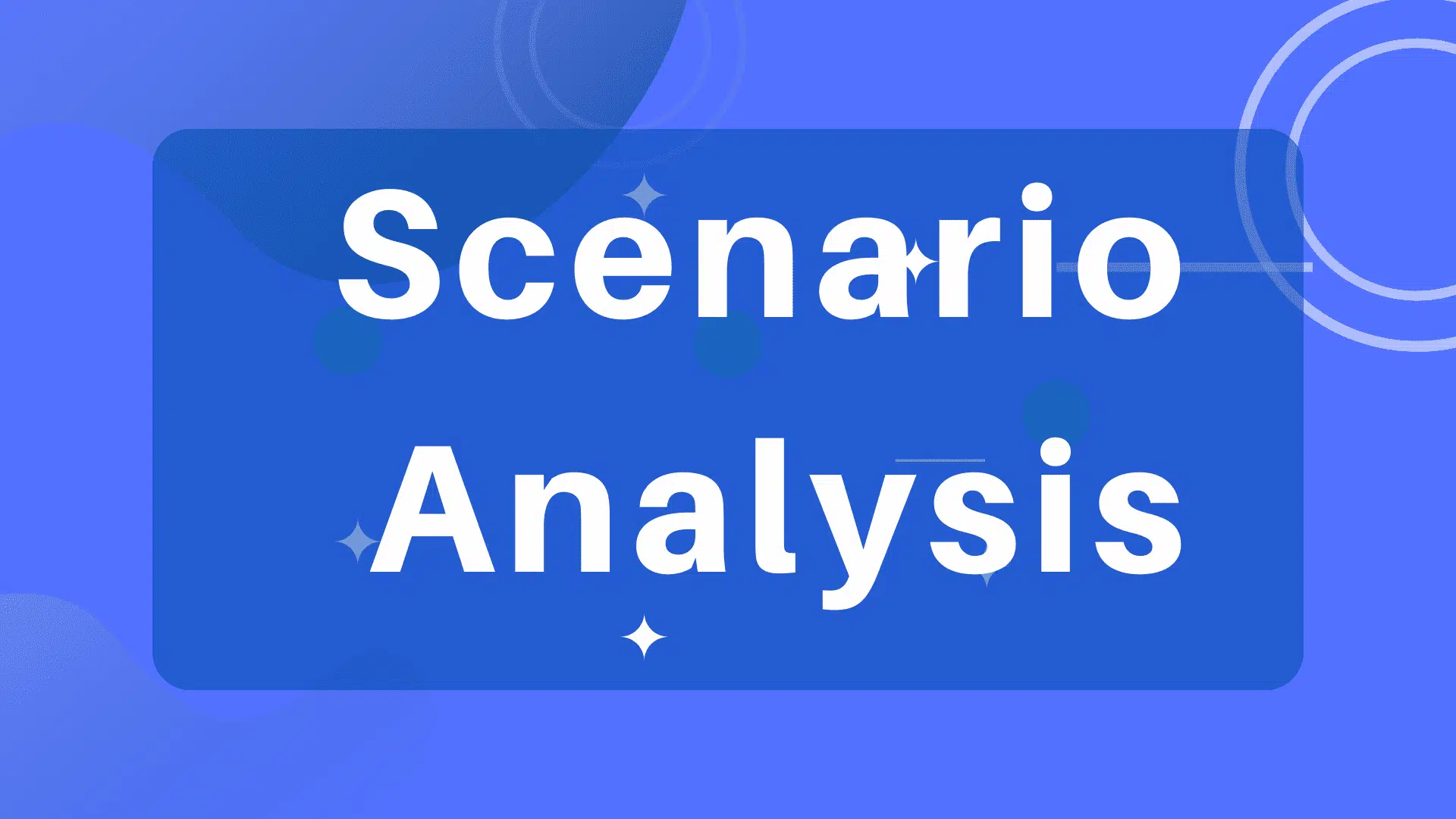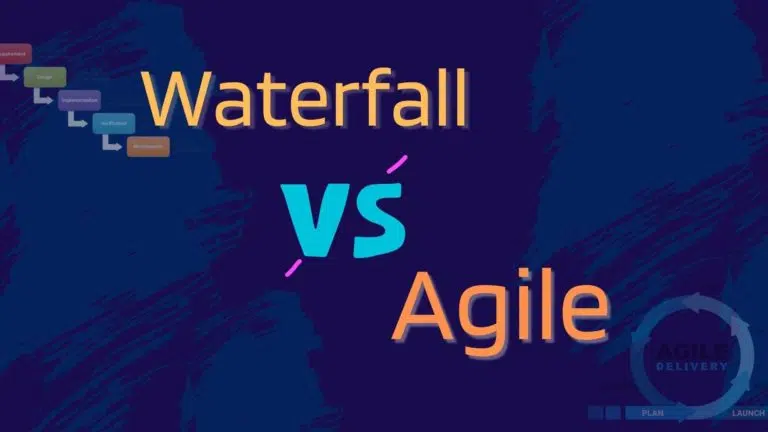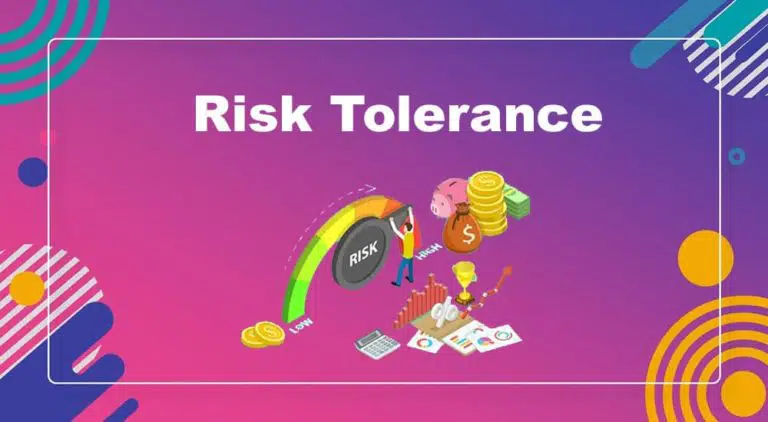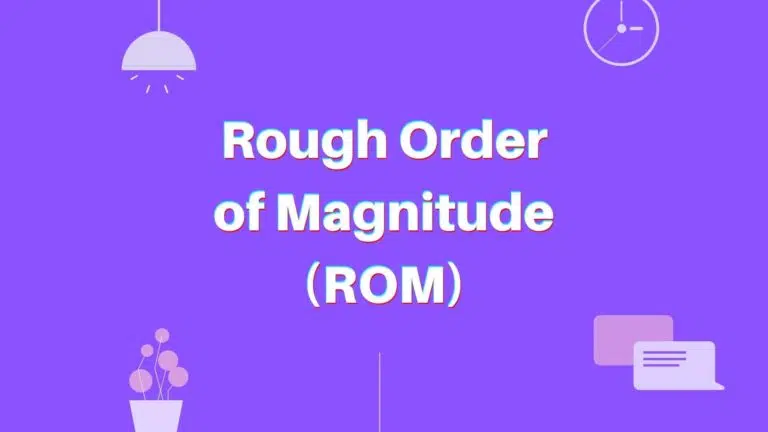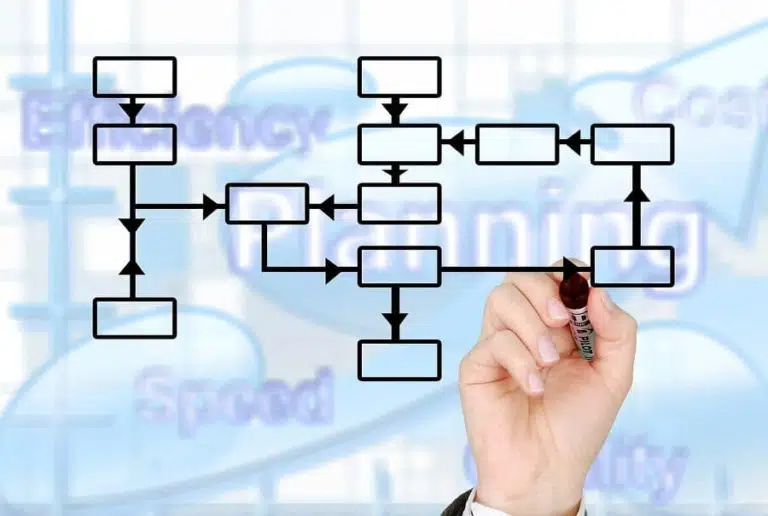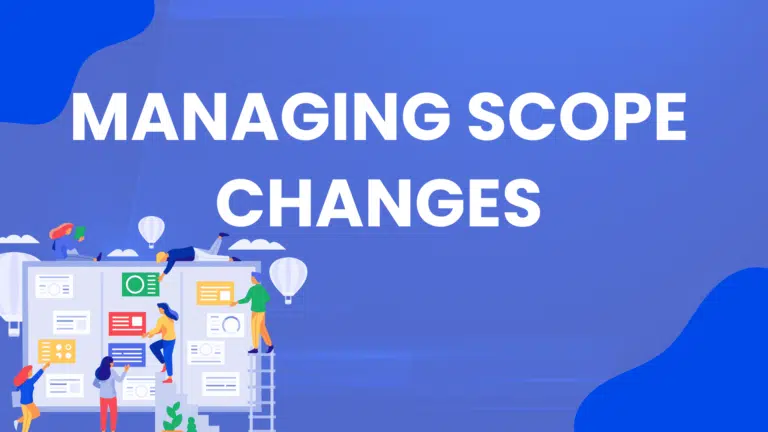Scenario analysis is the key to any business decision. It considers all assumptions and constraints under all circumstances. It is like a chess match, wherein players consider several moves to boost their chances of winning.
Project managers can make effective judgments with the help of scenario analysis and complete the project with minimal obstructions.
It is an effective tool in project management.
What is Scenario Analysis?
Scenario analysis is a strategic planning method that helps decision-makers understand the possible outcomes of future events. It considers all future possibilities, including the worst-case and best-case scenarios.
It requires the simulation of several scenarios based on predictability and trends. Project managers can make better judgments by understanding potential risks, opportunities, and consequences in different situations.
Scenario analysis is a key tool in risk management.
How to Conduct Scenario Analysis
You can follow the following steps to conduct a scenario analysis:
- Identify the risks that could affect your business.
- Develop different scenarios based on how each risk can occur.
- Quantify the impact of each scenario on your business.
- Develop contingency plans for each scenario.
Types of Cases in Scenario Analysis
There are three scenarios in a scenario analysis:
- Worst-Case Scenario: The scenario is considered the worst case when most assumptions are negative. Nothing worse than these conditions can happen.
- Base-Case Scenario: A baseline scenario is based on current and commonly accepted assumptions.
- Best-Case Scenario: All assumptions are considered true in this scenario, and the project will achieve its objectives.
Why is Scenario Analysis Important?
Scenario analysis is important for the following reasons:
- By considering a range of possible futures, scenario analysis can help businesses identify potential risks that may not be apparent under a single set of assumptions. This can help businesses develop plans to mitigate or avoid these risks.
- Scenario analysis can help businesses make better future decisions by considering a range of possible outcomes.
- Scenario analysis can help businesses adapt to change by preparing for various possible futures.
Scenario analysis helps with project management—particularly risk management—in the following ways:
- It helps identify low-probability, high-impact events. These events are most likely to cause significant damage to the project but are the least likely to occur. Scenario analysis can help project managers identify these events and develop risk-response plans.
- It helps quantify risk levels. Scenario analysis can help project managers quantify the risk level of different events. This information will help them better allocate resources and manage their risk exposure.
- It communicates risks to stakeholders. Scenario analysis can communicate risk to stakeholders and build trust and confidence in the project.
Who Uses Scenario Analysis?
Project managers use scenario analysis to understand how various changes affect project objectives.
Business analysts, accounting professionals, finance managers, financial analysts, etc., can use scenario analysis. They may use it to predict the economic activity of a firm to decide how to allocate money and make financial decisions.
Benefits of Scenario Analysis
Scenario Analysis empowers organizations to expect and navigate future complexities. Businesses and investors can use scenario analysis to prepare, plan, and adapt for the future.
A few benefits of scenario analysis are as follows:
- Get Future-Ready: Scenario analysis uses data and forecasts to map future events. It helps businesses get ready for the future.
- Stay Active: By checking different scenarios, businesses can amend plans and stay ahead of problems.
- Check Risks: This method spots risks by looking at the best and worst cases. It helps protect company assets.
- Build Trust with Investors: Scenario analysis helps build a robust plan, prepare the company to handle risks, and build trust with investors.
Challenges of Scenario Analysis
- Individuality and Bias: Scenario analysis depends on expert judgment, assumptions, and views, and therefore, it can be affected by biases, which might affect the accuracy and applicability of the insights.
- Excessive Focus on Extreme Scenarios: Stakeholders may concentrate on extreme possibilities, thus neglecting more likely outcomes or creating overly cautious or aggressive policies.
- Difficult to Quantify Uncertainties: Quantifying uncertainties and assigning probability to various situations can be difficult—especially when working with complex and interwoven concerns.
- Resource and Time Constraints: Scenario analysis can be a resource-and-time-consuming process when analyzing large-scale systems or organizations.
- Limited Dataset Availability: A robust scenario analysis requires precise and trustworthy data. If the data is not reliable and historical, or if real-time data is not available, scenario analysis may not provide effective results.
Examples of Scenario Analysis
Here are a few examples of scenario analysis in different contexts:
- Business Expansion: A retail company considers expanding its operations to a new market. They create three scenarios: (1) a “Best Case,” (2) a “Worst Case,” and (3) a “Most Likely Case,” based on different levels of market acceptance, competition, and economic conditions. To determine expansion feasibility, they analyze how each scenario would affect sales, profitability, and resource allocation.
- Energy Sector Planning: A government agency is developing an energy policy for the next decade. They create scenarios considering different levels of renewable energy adoption, global oil prices, and technological advancements. By examining these scenarios, they can assess the potential environmental, economic, and geopolitical effects of different policy decisions.
- Financial Investment: An investment firm considers investing in a new technology startup. They create scenarios that outline different technology adoption rates, competitive landscape changes, and regulatory shifts. Through scenario analysis, they estimate potential returns and risks associated with the investment.
- Product Development: A technology company is developing a new software product. They create scenarios to assess how the product’s success might vary based on user adoption rates, competitive responses, and evolving customer needs. This informs their development and marketing strategies.
- Retail Sales Forecasting: A retail company plans its sales for the holiday season. They create scenarios considering consumer-spending behaviors, online vs. in-store shopping preferences, and economic conditions. This assists them with inventory management and staffing decisions.
Scenario Analysis Tools and Techniques
- SWOT Analysis: Organizations may use SWOT analysis to assess their strengths, weaknesses, opportunities, and threats. This analysis helps decision-makers plan to exploit their strengths, correct their weaknesses, seize opportunities, and minimize danger.
- PESTEL Analysis: The PESTEL approach examines external variables (e.g., political, economic, social, technical, environmental, and legal) so that their possible effects in various circumstances may be understood by decision-makers, who can then use this knowledge to make better decisions, as well as more informed plans and strategies.
- Cross-Impact Evaluation: Cross-impact evaluation analyzes how a scenario’s different factors and risks relate to and depend on one another so that an organization or system’s possible repercussions and feedback loops can be better understood by stakeholders, thereby resulting in more effective and resilient solutions.
- Delphi Technique: The Delphi Technique is an organized communication method that depends on expert opinions to predict future outcomes, identify important factors and uncertainties, and create realistic scenarios. This approach is helpful when tackling difficult, unknowable, and transdisciplinary challenges.
- The Monte Carlo Method: The Monte Carlo Method is a quantitative model that evaluates all possible scenarios in various situations. This can assist decision-makers with developing improved strategies and plans by helping them better comprehend the risks and uncertainties linked to various situations.
- Dynamic System Modeling: Dynamic System Modeling aids stakeholders in comprehending how complex systems behave over time. By modeling various situations, decision-makers can find possible leverage points, feedback cycles, and unintended effects, resulting in more successful and resilient tactics.
Scenario Analysis Vs Sensitivity Analysis
Many professionals often confuse scenario analysis with sensitivity analysis, though both differ.
Scenario analysis considers many assumptions regarding different variables and factors for possible future scenarios and analyzes how each scenario will affect the business or project.
While Sensitivity analysis examines the effect of one input variable and keeping other variables constant.
Conclusion
Scenario analysis aids in the planning of corporate strategies by testing future assumptions. It enables management to recognize potential hazards and develop strategies to lessen their effects.
The scenario analysis matrix works best when customized to unique circumstances using various factors.

I am Mohammad Fahad Usmani, B.E. PMP, PMI-RMP. I have been blogging on project management topics since 2011. To date, thousands of professionals have passed the PMP exam using my resources.

